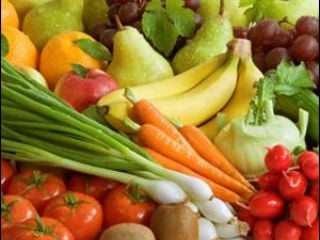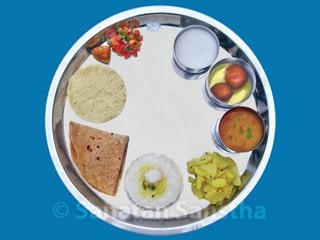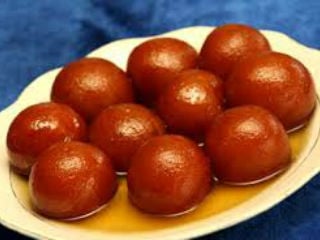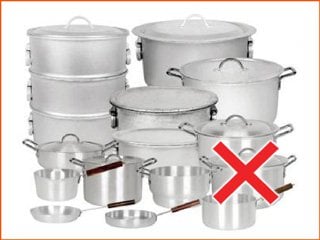Bharatiya method of preparing food
Rice cooked in a cooker becomes sticky as water penetrates it. As always when water seeps into something there is confusion ! When rice is cooked in a cooker at 250 degrees centigrade for 15 to 20 minutes with double water then will the vitamins be retained in it ? Instead of saving on gas later double is spent in paying the doctor. This usage of fire while preparing rice is wrong.
What is our traditional way of cooking rice ? Let us study the temperatures involved in it. First in a vessel put 16 times the water for a measure of rice and boil to 100 degrees centigrade. Then add the washed rice to it and boil for 8 to 10 minutes. Check whether it has cooked completely, remove excess water and pour into a sieve. Put it back into a vessel and cook at 50 to 60 degrees for 10 minutes with a cover. The rice grains cook well. Drink the water which is rich in carbohydrates. This way all vitamins are retained. As the preparation of the rice is appropriate and as the excess water has been removed from it both the rice and the water removed from it are light on digestion.
Rice cooked with 16 times, 8 times , 4 times and twice are respectively called manda, peya, vilepi and odan in common language nival, pej, atval and rice. Rice cooked after removing the water does not cause a paunch, also as the sticky rice increasing starch is removed at the right time blood sugar does not rise. In the Konkan region rice consumption is more yet they do not appear to have a paunch. On the contrary paunches are seen on eating rice cooked in pressure cookers. So is there not a vast difference in rice cooked removing the starch and in the cooker ? So this is the Bhartiya method of preparing food.
– Vaidya Suvinay Damle, Kudal, Sindudhurg

 For healthy living avoid food that can cause antagonism due to contra-indications
For healthy living avoid food that can cause antagonism due to contra-indications Ill effects of artificial cold drinks
Ill effects of artificial cold drinks The connection between food and disease, important analysis on digestion
The connection between food and disease, important analysis on digestion Give up junk food and embrace Ayurveda
Give up junk food and embrace Ayurveda Should sweets be eaten at the beginning or end of a meal ?
Should sweets be eaten at the beginning or end of a meal ? Do not use aluminium or hindalium vessels for cooking
Do not use aluminium or hindalium vessels for cooking
Why Hindus do not add salt to rice for cooking?
Namaskar,
It is a general way in which rice should be cooked. There is no Dharmashastra underlying the cooking procedure of rice.